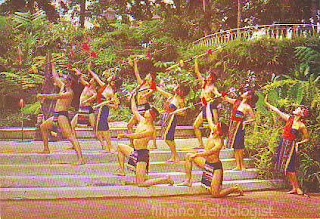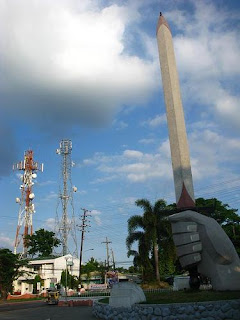Postcard Type: View card
Printed by: JMC Press, Inc., Quezon City
Purchased at Goodwill Bookstore
The postcard shows a "Tribal Story" dance as interpreted by the FILIPINESCAS. "Tribal Story", created by director-choreographer, Leonor Orosa-Goquinco, was the first suite in Mt. Province dance styles woven around the death of a tribal warrior.
The postcard shows the dancers wearing traditional dresses including the bahag or g-string worn by the men.
The back of the postcard reads:
Tribal Story as interpreted by FILIPINESCAS: Philippine Life, Legend and Lore in Dance
Tribal Story as interpreted by FILIPINESCAS: Philippine Life, Legend and Lore in Dance
SOURCE:
Rosalinda Orosa: FILIPINESCAS and CSB Forging a Partnership






